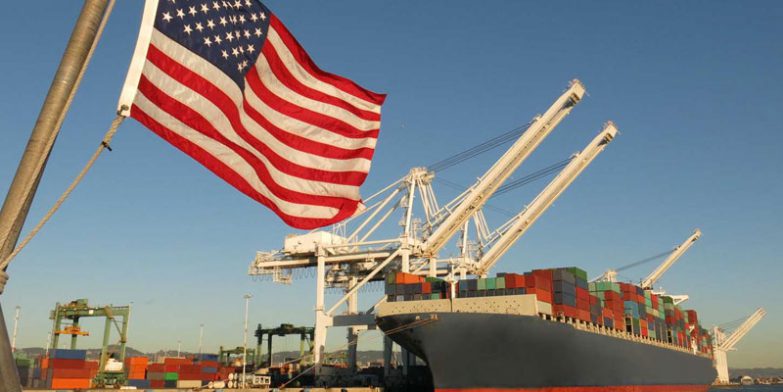
Historically East Coast sea freight rates from Asia have always been significantly higher than West Coast rates, because much smaller traffic volumes were routed to the East Coast, but recent events are testing that truism.
Shipper volumes have been predominately routed to the West Coast and consequently prices loaded to the East Coast, but the traditional spread between East and West coast rates is narrowing due to rate fluctuations, more services coming to the East Coast and the disruption at the drought-stricken Panama Canal, with restrictions likely to stay in place through next year.
Freight rates from China to the East Coast have been falling faster than the West Coast recently which has contributed to the rate spread narrowing and ironically coincides with stronger volumes from Asia at West Coast ports compared to the East Coast.
Asian volumes to the West Coast rose 15% in October, compared to 2022, while East Coast volume gains were just under 7%, but despite the gains the East/West Coast spread was just 40% of the last decade’s average.
Container shipping services from China predominantly move through the Panama Canal, with only about 25% of the weekly container capacity coming into East Coast ports moving through the Suez Canal.
Ships moving through the Suez originate primarily from South China and Southeast Asian ports, while Panama Canal services typically come from China’s coastal ports, Taiwan and South Korea.
But with more imports being sourced from Southeast Asia, the carriers will add more capacity and services to serve those routes, which may actually rebalance the relative volumes shared by the the two canals, particularly with the growth in Southeast Asian manufacturing.
In a recent editorial the Journal of Commerce suggested that the East-West rate spread was “a force of habit” that developed over the years during negotiations over ocean rate contracts and that “it was the common understanding” between ocean carriers and shippers that East Coast rates should be higher than West Coast rates.
Multi-million dollar investments in new and existing East Coast container terminals reflects the growing belief that the growth in trade from India and Southeast Asia will become entrenched and that bigger ships will be servicing that trade lane. CMA CGM building its own terminal suggests they are convinced.
Global Forwarding USA has a dedicated sea freight team, who leverage our long-term ocean carrier relationships and $Billion buying-power to deliver cost-effective, resilient and reliable solutions to the East and West Coast.
If you have concerns or questions regarding any of the issues highlighted here, we can provide insights, advice and guidance. EMAIL Adam Davies, Global Forwarding USA, Vice President.





